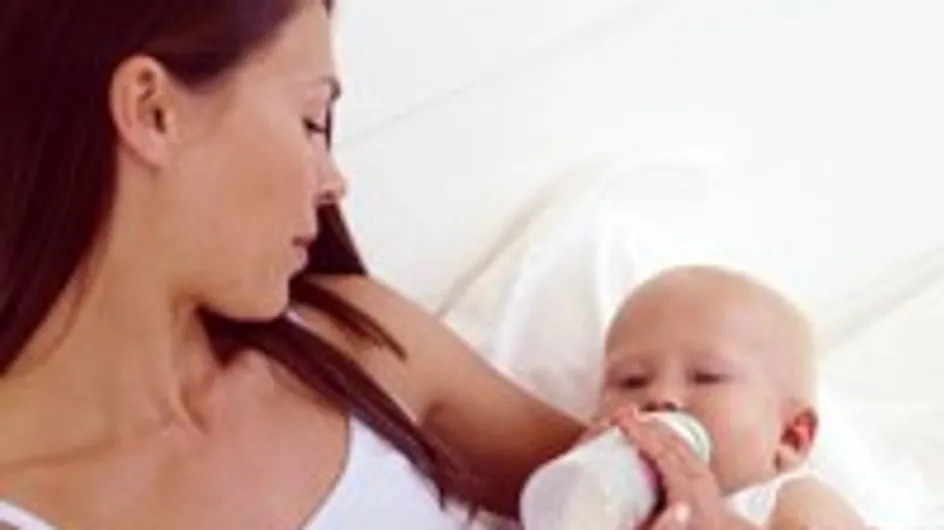Bottle feeding
- Formula milk takes long to digest so bottle-fed babies need to be fed less frequently.
- You'll know exactly how much milk your baby has had.
- Both parents can share the task of feeding and other family members can also bond with the baby during feeds.
- You can resume your normal life as you won't need to be present to feed your child.
- You can eat and drink what you like.
The disadvantages of bottle feeding:
- It's expensive particularly if you child has an intolerance
- You will need to purchase steralising equipment, bottles and teets
- Steralising and preparing bottle feeds can be time consuming
- You have to heat formula milk
- It's not as good for your child as breast milk
Remember the choice is yours and if you choose to bottle feed you should try not to consider yourself a failure. The choice should be what is right for you and your child and everyone is different.
Our guide to successful bottle feeding
Make up one bottle at a time.
Before preparing the bottle, wash your hands with soap and make sure your work surface is clean.
- Pour the boiling water into the bottle first and allow it to cool, do not leave longer than half an hour. Artificial formula milk powder is not sterile so it is important that water of at least 70 degrees is used to destroy any bacteria.
- Ensure that you follow the manufacturer's instructions for mixing the milk as adding too much or too little can make your baby ill. Never add any cereals or food stuff to the bottle.
- Holding the edge of the teat, place on top of the bottle gently and then put the rest of the bottle together.
- If you need to feed your baby whilst away from home, pre-packed milk cartons are ideal. Otherwise, use a flask of hot water and add the milk (already weighed out) as you would usually.
Cleaning and sterilising baby bottles
All equipment and bottles used for feeding your baby must be washed and sterilised first.
- Wash using warm soapy water, ideally as soon as a feed is finished. Use a brush to get into all the hard to reach areas then thoroughly rinse all the soap off under running water.
- Sterilise the bottles following the manufacturer's instructions on your equipment.
- Before you start, ensure that your hands and the surface area that you are using to prepare the bottles are clean.
Tap water or bottled water for baby?
Don't listen to the myths: tap water is fine for babies' milk! However, find out from your local council or water board about the quality of water and follow these rules:
- let the tap run for 2 to 3 minutes before using
- only use cold water
- avoid using filtered water in jugs: bacteria proliferates in them
- if the tap is equipped with a diffuser, descale it regularly
If you want to give your baby bottled water, check whether it’s suitable for babies and always make sure that it is boiled too. Bear in mind that an open bottle must be kept in the fridge and consumed within 24 hours.
The right temperature
- Ensure that the milk has cooled before giving it to your baby. Always check the temperature is OK by pouring a few drops onto the back of your hand.
- Give baby his or her bottle at room temperature (as you will have done in the maternity ward). If you prefer to heat it up then use a bottle heater. Be wary of heating bottles in microwaves as they don't heat evenly and you could end up with parts that are too hot.
- If the milk is warmed up, the bottle must be consumed within half an hour. If it’s at room temperature, it should be consumed within an hour.














